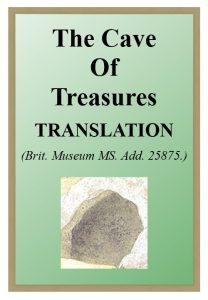The Cave of Treasures was introduced to the world by Giuseppe Simone Assemani, the author of the Catalogues of Oriental Manuscripts in the Vatican Library, which he printed in Bibliotheca Orientalis in four thick volumes folio. In Vol. ii. page 498 he describes a Syriac manuscript containing a series of apocryphal works, and among them is one the title of which he translates Spelunca Thesaurorum.
He saw that the manuscript contained the history of 5,500 years, from the creation of Adam to the birth of Christ, and that it was based upon the Scriptures. He says that fables are found in it everywhere, especially concerning the antediluvian Patriarchs, and the genealogy of Christ and His Mother. He mentions that the Patriarch Eutychius also describes a cave of treasures in which gold, frankincense, and myrrh were laid up, and refers to the “portentosa feminarum nomina,” women of Jesus’ ancestry. No attempt was made to publish the Syriac text; in fact, little attention was paid to it until August Dillmann began to study the Conflict of Adam and Eve in connection with it, and then he showed in Ewald’s Jahrbüchern (Bd. V. 1853) that the contents of whole sections of the Book of the Cave of Treasures in Syriac and the Conflict of Adam and Eve in Ethiopic were identical.
